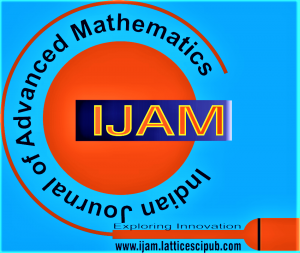![]()
Numerical and Analytical Method based Mathematical Approach to Estimate Water Pollution over 3-D Region
Tarjani Naik1, Mukesh Patel2, Rachna Patel3
1Tarjani Naik, Scholar, Department of Mathematics, Uka Tarsadia University, Bardoli (Gujarat), India.
2Dr. Mukesh Patel, Assistant Professor, Department of Mathematics, Uka Tarsadia University, Bardoli (Gujarat), India.
3Dr. Rachna Patel, Assistant Professor, Department of Computer Engineering, CGPIT, Uka Tarsadia University, Bardoli (Gujarat), India.
Manuscript received on 26 September 2025 | First Revised Manuscript received on 02 October 2025 | Second Revised Manuscript received on 08 October 2025 | Manuscript Accepted on 15 October 2025 | Manuscript published on 30 October 2025 | PP: 50-62 | Volume-5 Issue-2, October 2025 | Retrieval Number: 100.1/ijam.B122205021025 | DOI: 10.54105/ijam.B1222.05021025
Open Access | Editorial and Publishing Policies | Cite | Zenodo | OJS | Indexing and Abstracting
© The Authors. Published by Lattice Science Publication (LSP). This is an open-access article under the CC-BY-NC-ND license (http://creativecommons.org/licenses/by-nc-nd/4.0/)
Abstract: One of the major environmental issues is water pollution, which harms aquatic ecosystems, human health, and the sustainability of natural resources. To solve this problem, reliable mathematical models are required that can predict the behaviour of pollutants in three-dimensional (3-D) water systems. In this study, the temporal and spatial fluctuations of pollutant concentration in water are estimated using a 3-D diffusion model. The work’s goals are to investigate the gradual rise in pollution levels in a 3-D region and assess the accuracy of analytical and numerical methods for addressing diffusion-based pollution issues. Two distinct mathematical techniques are employed to determine the level of pollution in water at a 3-D location: the Crank-Nicolson (C-N) method, a numerical method, and the Adomian Decomposition Method (ADM), an analytical method. The data collected from an experiment conducted in a 3-D cuboid tank, where water serves as the medium and iodised saltwater solution as the pollutant, are used to derive the initial and boundary conditions for the presented mathematical approaches. The dispersion of pollutants over time and space can be directly observed in this experiment, yielding crucial data for validating the mathematical model. The results of the experiments show that during all the time intervals, there is a rise in water pollution at all 3-D locations. Furthermore, the insignificant error in the form of parts per million (PPM) difference obtained when comparing the outcomes of the C-N with Experimental data (Exp. data) and ADM methodologies demonstrates the effectiveness of the proposed mathematical model. The benefit of this research lies in the use of mathematical approaches and experimental data to investigate water pollution in a 3-D region. The study demonstrates the validity of the proposed model and its ability to forecast the spread of pollution in water accurately. This method is also applicable to larger water systems than the experimental tank. The research enhances mathematical solutions to diffusion equations and provides valuable insights for developing pollution control measures, assessing water quality, and promoting sustainable water management.
Keywords: Water Pollution, 3-D Diffusion Equation, CrankNicolson Method, Adomian Decomposition Method Mathematics Subject Classification: 35K57, 65N06
Scope of the Article: Applied Mathematics
